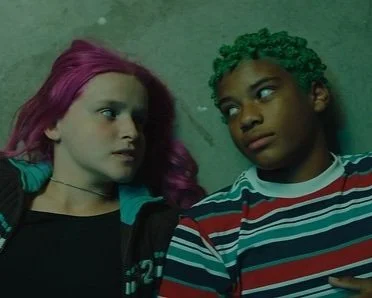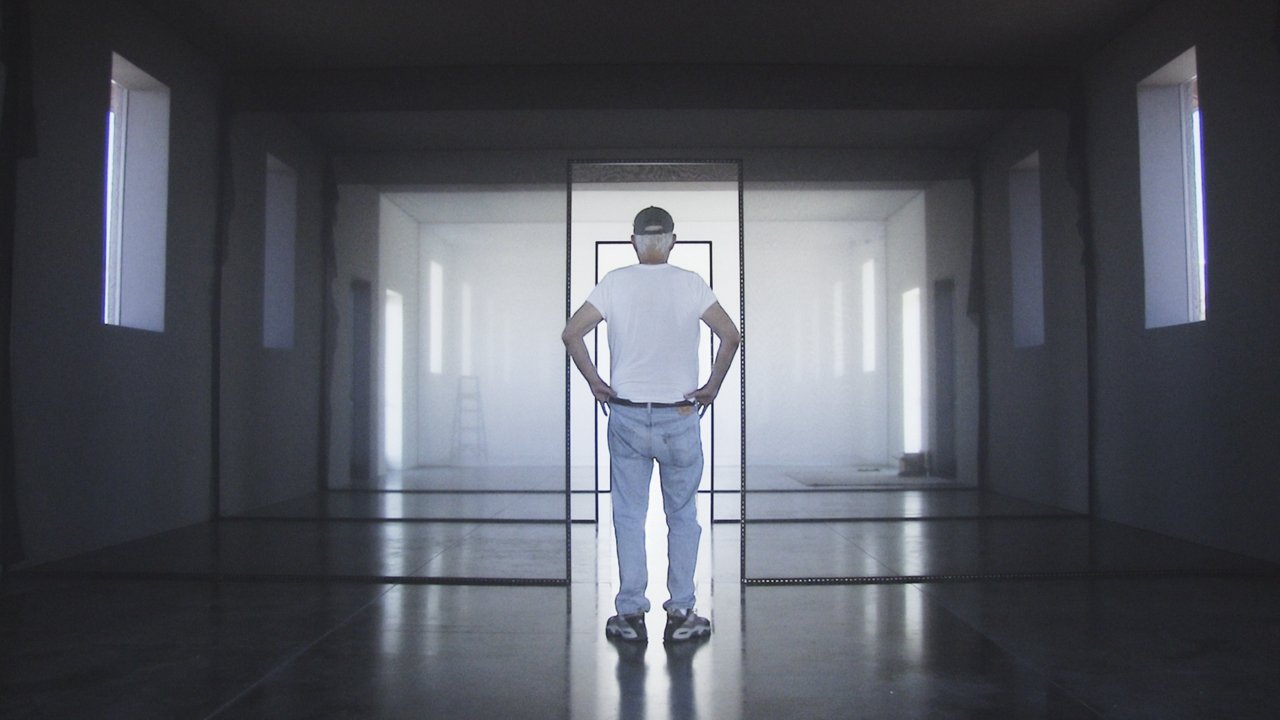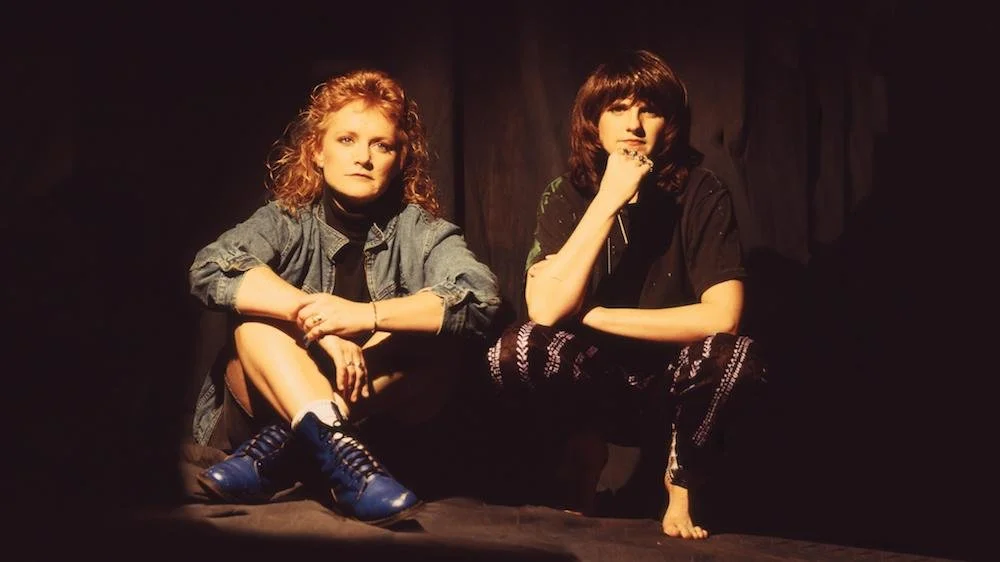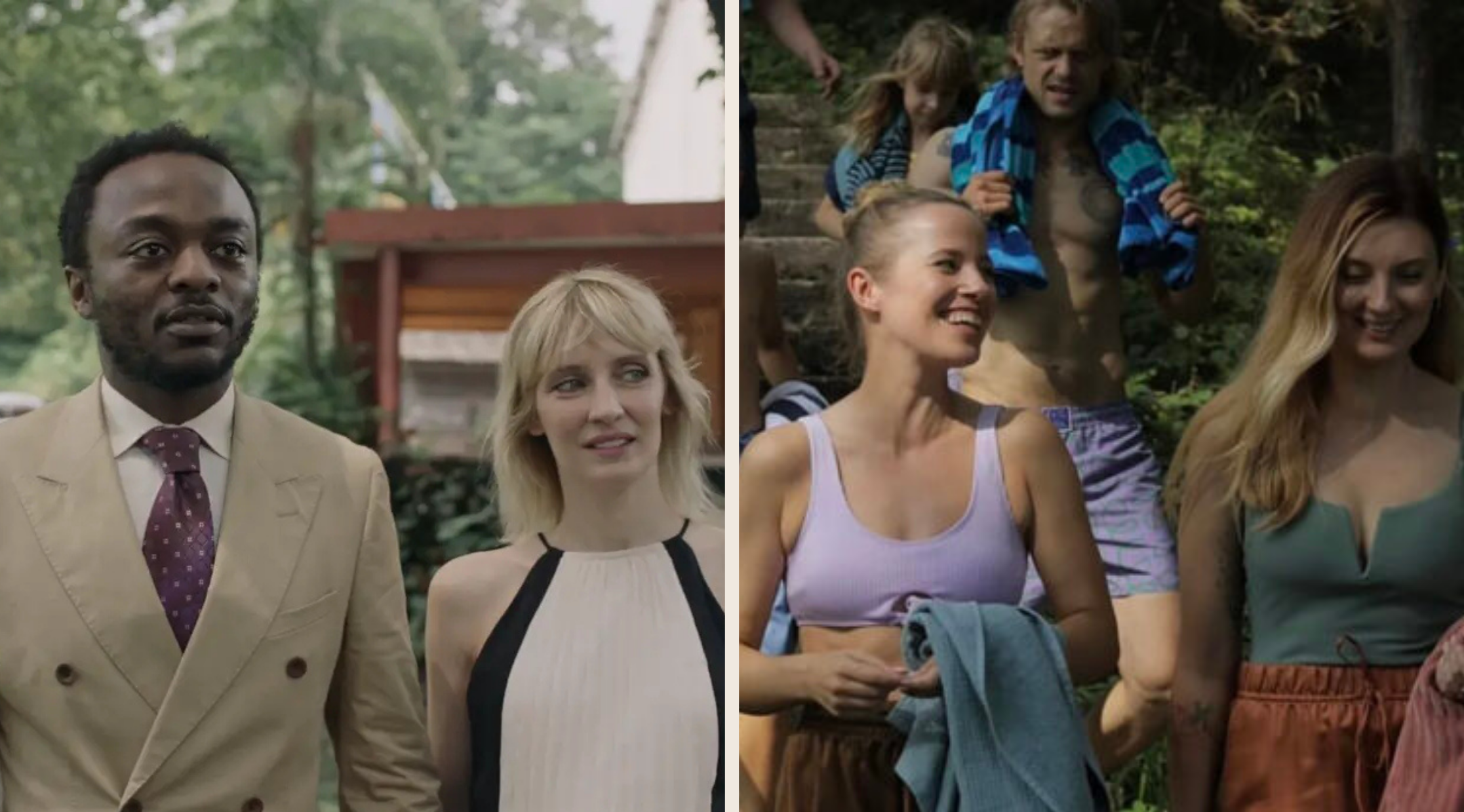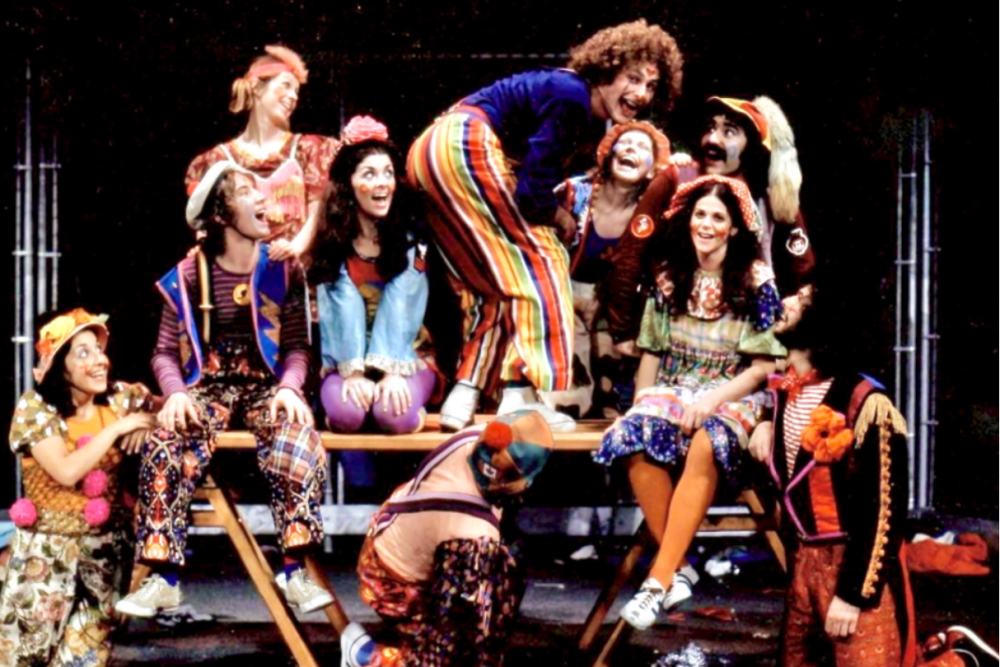Film reviews: Two B.C.-shot standouts, Ken Loach's latest, and more from VIFF
Wild Goat Surf carves out a new kind of coming-of-age tale; Seagrass summons ghosts of history; plus The Old Oak, Rapture, and much more
Wild Goat Surf.
Seagrass
Wild Goat Surf
September 29, 6 pm, The Rio Theatre; October 3, 3:45 pm, International Village
There's a moment, imperceptible but significant, when the unburdened, carefree, and unstructured days of adolescence start to carry a certain weight. B.C. director Caitlyn Sponheimer explores this juncture in her summer dazed feature Wild Goat Surf. Twelve-year-old Goat (Shayelin Martin) has a crystal-clear vision of who she is, or at the very least, who she aspires to be. Despite never having laid eyes on the ocean, her dreams are filled with visions of conquering big waves. Nestled in the picturesque Skaha Lake, where she and her mother spend summers in a neighboring RV park, the young teen’s thoughts are perpetually drawn to images of world-class surfers, especially her late father. Growingly restless, the precocious and unsupervised Goat crafts her own fun with newfound friend Nate (Leandro Guedes). The duo barrel through the tranquil, sun-soaked town on their skateboards, dedicating their afternoons to honing their surfing skills using plywood sheets on the lake, shoplifting, or trespassing into people’s pools. In her directorial debut, Sponheimer, working alongside cinematographer Joseph Schweers, captures the Okanagan Valley in a harmonious blend between the intimacy of lived-in moments and the vastness of the landscape. The film's naturalistic lead performance extends into the unexpectedly tender dynamic between the mother and daughter. This tenderness is further enriched by Sponheimer's depiction of Jane, Goat's mother—a well-meaning and resilient single parent who juggles multiple jobs while enduring scrutiny of her parenting abilities whenever Goat finds herself in a scrape. With gentle execution and well-landed elements from beginning to end, Wild Goat Surf carves its own path within the coming-of-age genre, securely and refreshingly rooted in its unique sense of place. AR
SEAGRASS
September 29, 9 pm, The Rio; October 1, 9 pm, SFU Woodward’s
The past is literally a ghost in Seagrass, and it harrows young Emmy while her parents struggle to patch up a faltering relationship during a retreat on Gabriola Island. Japanese-Canadian Judith is herself haunted by generational trauma following her mother’s death, while her attraction to a neighbouring couple’s husband drives a further wedge into a rocky interracial marriage. Seagrass offers no easy answers and ends on the kind of discordant note that’s unusual for most drama, but not for the kind of grown-up films produced by BC’s Experimental Forest Films, which also gave us 2017’s Never Steady, Never Still and 2019’s The Body Remembers When the World Broke Open. There are moments when it feels slightly undercooked, but the early-’90s setting suggests that it’s a very personal work for writer-director Meredith Hama-Brown, who’s made a feature debut to be proud of. AM
A COOLER CLIMATE
October 2, 6:15 pm, International Village
In 1960, a young James Ivory packed his camera and visited Afghanistan with the intention of making a short travel documentary. Over half a century later he creates an erudite film essay largely about James Ivory, in which which Proust, EM Forster, and the unfinished memoirs of 16th-century Mughal emperor Babur converge with the evocative footage he brought home with him. Ivory’s recall is as sharp as the faded 16mm film is timeworn, its poor resolution and grain providing a ghostly remembrance of an Afghanistan pushing towards liberal modernization, which Ivory’s hosts in Kabul wished to promote, at times literally cupping their hands over his lens whenever the young filmmaker’s eye wandered towards sights they wanted to conceal from the world. At the time, America and the USSR both vied for Afghanistan’s favour, and we all know how that ended. (In the film’s opening minutes, Ivory casually mentions that he roomed inside a “nest of CIA spies” and that his trip was financed with “Rockefeller money.”) Nine months later, Ivory returns to New York and meets Ismail Merchant, whereupon A Cooler Climate ends, artfully becoming both a prologue and an afterword to an epic career. AM
THE OLD OAK
October 3, 6 pm and October 6, 3:30 pm, Playhouse
The arrival of Syrian refugees in a depressed Northern mining town triggers the anger of locals, who grumble about the situation at the Old Oak pub. Landlord TJ finds himself torn between old friends and newcomers. That’s the gist of the latest effort from VIFF fave Ken Loach, now in his fifth decade of filmmaking, and once again streamlining entertainment and polemics into a satisfying whole. In recent years, Loach and screenwriter Paul Laverty have zoomed in on whatever new form of immiseration is being visited upon Britain’s working class—2019’s Sorry We Missed You took a hammer to the gig economy—so it’s significant that The Old Oak takes us back to 2016, prior to events that have atomized the UK’s old growth Left and plunged it into disarray. Meanwhile Loach is threatening that he might retire. That would be a loss. The Old Oak has its faults, for one thing repeating an unfortunate falsehood about the Syrian conflict, but its sensitivity towards all of its characters, including the apparent bigots, who are allowed a measure of self-awareness and shame, is what makes Loach so vital. As one character says of the situation, “If you say anything about it, all the posh wankers make you out to be racist,” and he isn’t exactly wrong. AM
WaaPaKe
October 1, 6:30 pm, SFU Woodward’s; October 4, 3:45 pm, International Village
In Swampy Cree, the word WaaPaKe means tomorrow—and as Attawapiskat filmmaker Jules Koostachin says in her new documentary set to have its world premiere at VIFF, “Tomorrow means hope. It means that we have a future.”
Offering a glimpse into the lasting impact of intergenerational trauma, five Indigenous folks—one residential school survivor (Koostachin’s mom), three children of survivors (including Koostachin), and the grandson of a survivor (Koostachin’s son)—tell their stories during on-camera interviews, each seated in front of a greenscreen. Backdrops alternate between the sprawling landscapes of the Attawapiskat, Kwantlen, Champagne, and Aishihik First Nations, offering views of snowy mountain caps, a flowing river, and tall-standing trees. It’s a comforting ode to their homelands that adds visual depth to the emotional words shared. Contrasting the rolling footage of natural beauty are haunting still shots. In one instance, a tray of sugary butter cookies and a white porcelain tea set perch atop a lace doily, juxtaposed against a pitch-black backdrop. Elsewhere, a rosary drops onto a shadowy display holding a large wooden cross, religious texts, a wavering candle, and sacramental wine, imparting a feeling of doom. In a more simplistic-yet-effective shot, a redhead doll with braids lays grimly abandoned on dry grass. The variety in imagery is unsettlingly striking. It creates an air of fear and apprehension as the subjects tell their truths. Above all, WaaPaKe points to a road forward in which culture can be relearned and passed down despite traumatic pasts. The film’s unwavering openness, though heartbreaking at times, reveals threads of hope. EL
Robert Irwin: A Desert of Pure Feeling
Robert Irwin: A Desert of Pure Feeling
October 8, 6 pm, International Village
At the age of 88, after 17 long years of work, California artist Robert Irwin finally saw his crowning achievement unveiled in 2016: untitled (dawn to dusk),” a massive permanent installation—a sprawling, derelict hospital in Marfa, Texas that he used screens and portals to transform into an ever-shifting ode to space, time, and light. As he puts it, “You don’t try to top Mother Nature, you invite her in”—words that could apply to much of his site-specific installations. Shaped by his architectural modifications, the environment changes as the clouds and sun move around it. Documentary director Jennifer Lane traces the path Irwin took to Marfa—as ab eccentric art teacher and self-taught philosopher, who supported his career by applying much of the same, pure logic to the horse races as he did to his artworks. Along the way, Lane touches on several major works and cracks a lot of the mystery behind the man, but for some reason leaves the Marfa site to the very end of this otherwise conventionally structured doc. Still, for those who know little about him, Irwin comes through as a real discovery; for those who do, the film will reinforce the artist as that rare thing: a true original, without pretension. As one critic says here, “His art can engage anybody.”
The Face of the Jellyfish
October 5, 6:30 pm, The Cinematheque, October 7, 4:15 pm, Vancity Theatre
Ever gazed at your reflection until your own face seems alien? Argentinian filmmaker Melissa Liebenthal encapsulates this eerie sensation in her essayistic and wry new feature, The Face of the Jellyfish. In the film, Marina, a woman in her 30s, avoids her own reflection and disables her camera when her boyfriend and colleagues try to reach out. She confounds doctors with her claim that her face is no longer hers. What could initially appear as a potential case of body dysmorphia reveals itself to be a physical enigma and an intriguing premise: Marina’s face has actually undergone a complete overnight transformation. Set against the backdrop of her personal history, easily accessible through childhood photo albums, old Facebook posts, and even her grandmother's family archive, Marina grapples with her evolving identity. Somewhere between fiction and essay, the dramedy weaves dryly comedic scenes of Marina navigating her new daily life with documentary footage from various zoos, where humans compulsively observe and capture animals on their phones. Transitioning between this footage and the central storyline are simple animations that create a sort of biometric registry of Marina, her family, and the animals' faces. Liebenthal's detailed and humorous examination of human and animal eyes, ears, mouths, and noses touches on themes like surveillance, digital footprints, genealogy, and even the idea of human exceptionalism. While the movie sometimes struggles to link these elements with the finesse displayed in some of its visual mappings, the premise is strong and intriguing. AR
Tiger Stripes.
Tiger Stripes
October 7, 9pm, The Rio
The buzz around this Malaysian variation on Carrie is well deserved. Yet another coming-of-age feature, Tiger Stripes stands alone for its cheerful attitude and casual rejection of genre clichés, drenching the screen in light and colour and then ending on an ecstatic and irresistible non-sequitur. The premise is ancient: young Zaffan is brutalized by irrational authority figures and bullied by friends after getting her first period, awakening the supernatural beast within. This brings carnage and some delightfully weird makeup and visual effects, although the very best and most special effect is the luminous joy of youth that radiates from actor Zafreen Zairizal. AM
White Plastic Sky
October 5, 8:45 pm, The Rio Theatre
Set 100 years into the future, this spectacular animated feature from Hungary depicts a poisoned world in which Earth’s remaining inhabitants populate domed cities and eat the dead, who are spliced at the age of 50 into plant matter thanks to very clever future science and equivalently bad future politics. When depressed Nora volunteers for government-assisted suicide at a mere 32, husband Stefan gives his head a shake, and decides to do a Logan’s Run out of the city to save her. The film plunks rotoscoped actors into its fabulously rendered futurescapes and it’s a haunting pleasure to behold, even a little sexy in a downbeat way. Any reading of the film will depend on where the viewer stands in relation to themes of ecological armageddon and bizarre totalitarian “solutions”, about which the film seems totally ambivalent, leaving space for a portion of the audience to indulge in a kind of perverse wish-fulfillment. AM
It’s Only Life After All.
It’s Only Life After All
September 30, 3 pm, The Rio; October 4, 9:15 pm , The Rio
It’s impossible to walk out of this new documentary about the Indigo Girls without a new appreciation for just how damn trailblazing the alt-folk duo was—out and proud since the early 1990s, when straight guys ruled the airwaves. Die-hard fans will love this extensive—make that exhaustive—dive into Amy Ray and Emily Saliers’s music, activism, and careers, defying an industry eager to mould (and sexualize) female artists. Thanks to the fact that ever-self-effacing singer Ray toted a camera with her constantly, there’s a wealth of archival and backstage footage; add to that sometimes hilarious clips from TV appearances, from VH1 (check out those mullets!) to Charlie Rose. What comes through is a refreshingly unpretentious, authentic sense of justice—mocked as the pair is for being “earnest” in some cringe-inducingly sexist reviews read here, with the Girls having a good laugh over them. The up-close portrait (we even see Ray take out the recycling) also provides some intriguing insights into just how opposite Ray (hot-tempered) and Saliers (chill) are. That contrast, works, obviously: concerts from 30 years ago and today are a good reminder the Indigo Girls can often shred with the best of them, rocking out with entire stadiums singing every word along with them. JS
Hafsia Herzi in Rapture.
Rapture
September 30, 1:30 pm, International Village
Hafsia Herzi hands in a riveting and enigmatic performance as Lydia, a young Parisian midwife who takes an increasingly unsettling interest in her BFF’s new baby. The intriguing part of French writer-director Iris Kaltenbäck’s impressive first feature is the slow-burn way it constructs the undoing of its main character—showing that urban loneliness and ennui, combined with unrealistic societal expectations, can start to erode the judgment of even the most well-adjusted, seemingly successful woman. At first, Herzi only hints that Lydia is coming apart—she becomes unreasonably preoccupied with a quiet bus driver she has a one-night stand with, and pushes her friend to dangerous limits during the labour and birth of her child. Piecing the puzzle of the plot together slowly and quietly—it will take a while to even understand the identity and implications of who’s narrating our story—and showing sensitivity to her sphinxlike protagonist, Kaltenbäck slowly makes an outrageous act more believable. A subtle, psychological exploration that works its way quietly under your skin. JS


